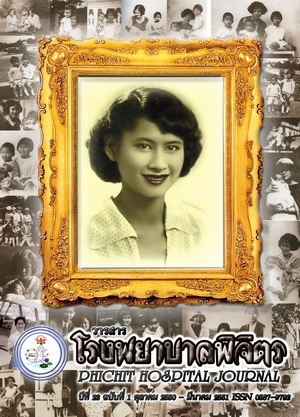Denque Haemorrhagic Fever Outbreak in Phichit Province, Thailand, 1998 - 2007
Abstract
Dengue infection remains a public health problem in Phichit province and Thailand. Only rapid diagnosis and treatment of the disease can not control outbreaks, The epidemiological surveillance date should be fully ultized to prevent and control the outbreaks. The purpase of the research were to study the situation and distribution of disease. In a descriptive section dengue infection data under surveillance of Phichit public health office during the period 1998-2007. The total numbers of 7003 dengue infection patients and 9 deaths were reviewed and analyzed. The study indicated dengue infection in Phichit province in past 10 years (1998-2007). The peak incidence rate of dengue infection was 2001 (349.98 per 100,000 population). The second was 2003. (176.7 per 100,000 population). The lowest incidence rate was in 2002 (35.59 per 100,000 population). The incidence rate decrease in 2002-2004, then slightly incresase in 2005-2007. The epidemiologic pattern had shifted from 2 years alter 2 years to rapid cycles. In 2007 the incidence rate was 114.91 per 100,000 population (781 cases), no death. Most of the patients were dengue infection in the 15-24 year age group (35.67%). The second 10-14 year age group (30.35%) and the third was 5-9 year age group (17.29%). The incidence rate was found in older children and adult than before. The outbreak was seasonal variation, began in May, and peak indence in July - August until early of winter season in December. The incidence in female and male were egual 1:1.2. Most patients were student (64%). The peak incidence of outbreak were different from District to another of District by years. The of study of epidemiologic outbreaks in the past 10 years can contributing very useful plan for the prevention and control of the diseases.Downloads
Published
2020-05-29
Issue
Section
Original Article

